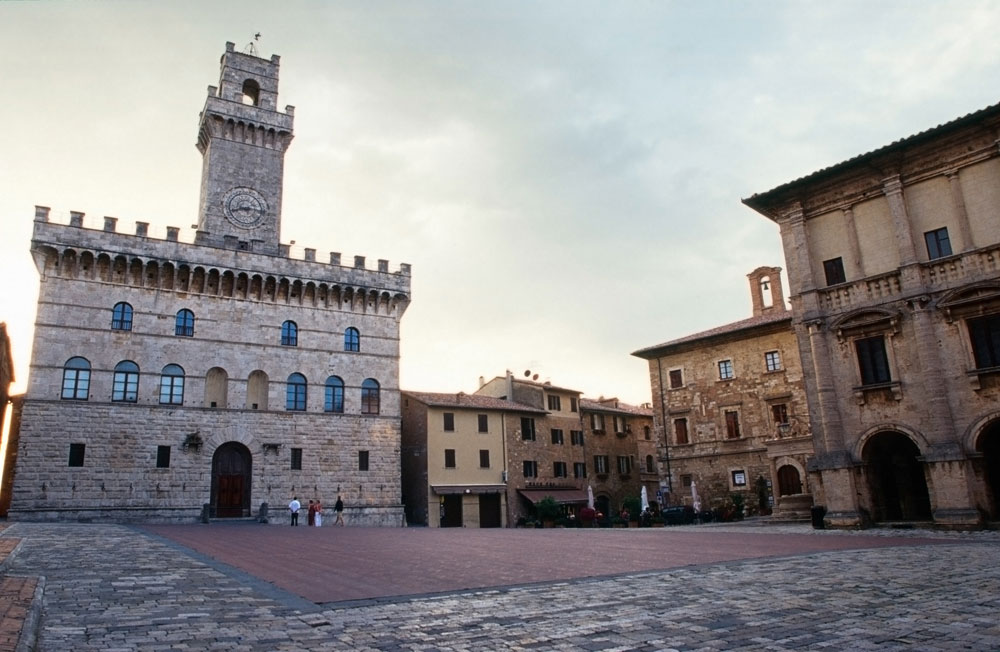We loved the town of Montepulciano when we first visited over 10 years ago. Like many of the Tuscan towns, it sits on top of a hill, overlooking the agricultural community. The wines made in and around Montepuliano come almost solely from a clone of the Sangiovese grape known locally as Prugnolo Gentile – kind of ironic. Montepulciano is technically situated within the large Chianti sub-zone of Colli Senesi. (Another homework assignment for extra credit – buy a nice quality Chianti Classico Riserva made from the traditional Sangiovese grape and compare it to a Vino Nobile di Montepulciano. Note the differences). Vino Nobile di Montepulciano was one of Italy’s first DOCG-certified wines.
————————————————————
There are some very nice, sometimes bordering on excellent, Vino Nobile di Montepulciano wines, many of which will last 5-10 years in your wine cellar. 
We have three favorites, which we have deemed cellar worthy: (1) Avignonesi, particularly the Grandi Annate Riserva if you can find it; (2) Poliziano Asinone (only made in years when the grapes are exceptional), and (3) Tenuta Valdipiatta (especially the Riserva). The price points for these three range from $25 to $40. These three producers offer consistent quality at reasonable prices, and can often be found on restaurant wine lists.
————————————————————
The bigger issue, though, is that the “Montepulciano” wine you’re likely to find in restaurants is a cheaper, often mass-produced one from Abruzzo. As our readers know, we have nothing against low priced wines – but we don’t like cheap wines. What we mean by cheap wines is that they taste mass-produced – no structure (not enough acidity to match up with food), no complexity (it tastes like fruity alcohol), and the wine is never something you’ll likely remember because it tastes like red wine (no distinctive character).
————————————————————
Like everything in Italy, there are a few exceptions – there are some VERY serious wines in Abruzzo, if you are willing to hunt them down. We think that the wines from Binomio (ranging from $40 – $60) are very complex, are very good with food, and can rival some of the better Chianti Classico Riserva wines. Be careful, though – the Binomio wines are very tight and tannic when opened young, so most likely you will be disappointed if you purchase it at a restaurant.
For the real wine geeks, you’ll find that the devil is in the details – in this case, the details of production and aging. Both Chianti and Vino Nobile di Montepulciano wines are made from 80 percent and 70 percent, respectively, of their local Sangiovese clones, you’ll find that the better Vino Nobile wines offer pure Prugnolo Gentile grapes. The aging requirements for both Chianti Riserva and Vino Nobile di Montepulciano wines are two years minimum before release, so the winemaker does not have a lot of flexibility. However, the amount of new wood versus old wood, and other factors in fermenting and aging, can make a difference. For example, the Avignonesi Vino Nobile Riserva is aged 30 months in new French oak, then aged an additional 9 months in the bottle before release; their normal Vino Nobile is aged for 18 months in Slavonian oak, traditionally used for Sangiovese in Tuscany, then six months in the bottle before release. The later is a nice drinkable wine with some complexity, while the Riserva is an exceptional, nuanced wine that would impress a fellow wine geek.
So, open a bottle of Vino Nobile, find some noble and righteous wine dudes, and you can impress them with your Montepulciano knowledge.


